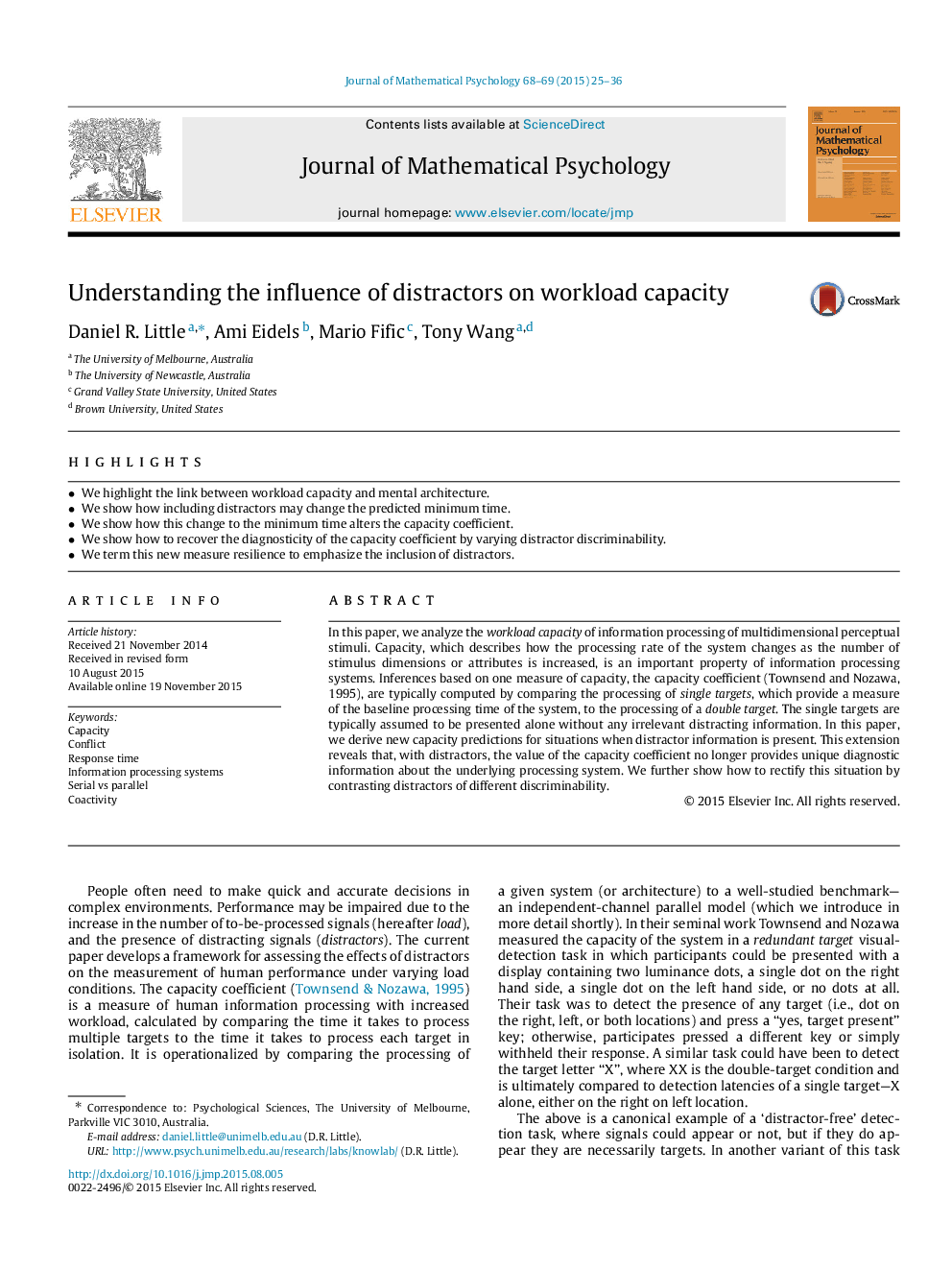| کد مقاله | کد نشریه | سال انتشار | مقاله انگلیسی | نسخه تمام متن |
|---|---|---|---|---|
| 326394 | 542401 | 2015 | 12 صفحه PDF | دانلود رایگان |
• We highlight the link between workload capacity and mental architecture.
• We show how including distractors may change the predicted minimum time.
• We show how this change to the minimum time alters the capacity coefficient.
• We show how to recover the diagnosticity of the capacity coefficient by varying distractor discriminability.
• We term this new measure resilience to emphasize the inclusion of distractors.
In this paper, we analyze the workload capacity of information processing of multidimensional perceptual stimuli. Capacity, which describes how the processing rate of the system changes as the number of stimulus dimensions or attributes is increased, is an important property of information processing systems. Inferences based on one measure of capacity, the capacity coefficient (Townsend and Nozawa, 1995), are typically computed by comparing the processing of single targets, which provide a measure of the baseline processing time of the system, to the processing of a double target. The single targets are typically assumed to be presented alone without any irrelevant distracting information. In this paper, we derive new capacity predictions for situations when distractor information is present. This extension reveals that, with distractors, the value of the capacity coefficient no longer provides unique diagnostic information about the underlying processing system. We further show how to rectify this situation by contrasting distractors of different discriminability.
Journal: Journal of Mathematical Psychology - Volumes 68–69, October–December 2015, Pages 25–36
